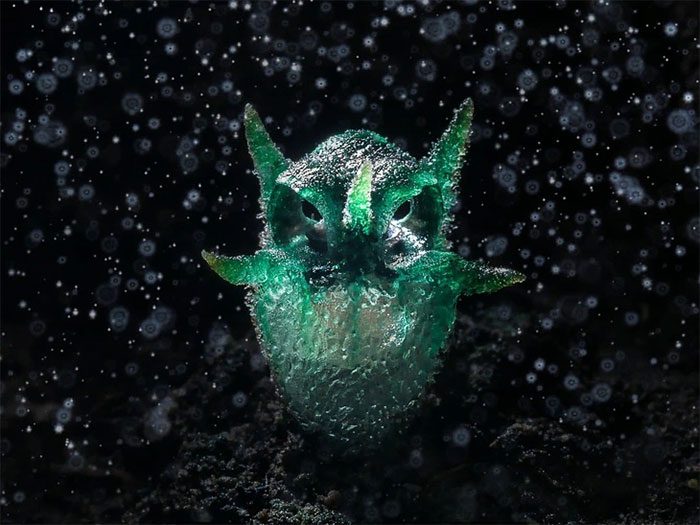Thismia thaithongiana does not photosynthesize but derives its energy and nutrients from fungi. Due to its owl-like appearance, it is also known as the “Mysterious Owl Eye.”
Recently, a stunning photograph of this peculiar plant won the gold award in the Plants and Fungi category of the 2024 World Nature Photography Awards.
According to the organizers, the “owl” is nestled within dark soil, emitting an unusual emerald green glow.

Thismia thaithongiana resembles a grumpy owl, living parasitically by extracting energy and nutrients from fungi – (Photo: Lertsintanakorn).
Scientists first discovered Thismia thaithongiana in 2018 in the Doi Hua Mot mountain range in Thailand.
Very little is known about this plant, but its strange shape has led to the name “Phisawong Ta Nok Hook”, meaning “Mysterious Owl Eye,” according to Nation Thailand.
Thismia thaithongiana primarily lives underground, making it visible to humans only when it surfaces, and even then, its size is extremely small.
“I was amazed by its tiny size, measuring only 2 to 8 millimeters in length,” said photographer Chatree Lertsintanakorn.
With the help of his friend, photographer Chanhomhuan, Lertsintanakorn discovered and captured a beautiful image of this plant in the Huai Kha Khaeng Wildlife Sanctuary in Tak Province, Thailand.
“I noticed it mainly grows near the base of trees, so it can easily be overlooked,” Lertsintanakorn told Live Science via email.
Thismia thaithongiana does not photosynthesize but instead derives energy and nutrients from fungi, specifically from fungi that are associated with the roots of trees.
Some fungi live around and within the roots of ancient trees, creating an underground network to seek minerals which they pass on to the trees. In return, the trees provide them with nutritional sugars in a relationship known as symbiosis.
Thismia thaithongiana disrupts this relationship by stealing nutrients produced by the fungi.


















































